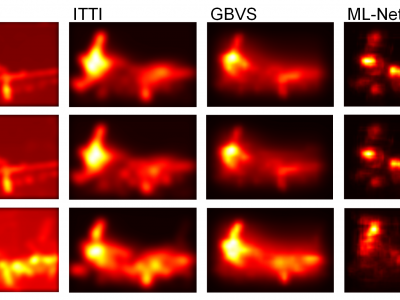Documents
Presentation Slides
DEEP LEARNING VS. TRADITIONAL ALGORITHMS FOR SALIENCY PREDICTION OF DISTORTED IMAGES

- Citation Author(s):
- Submitted by:
- Xin Zhao
- Last updated:
- 2 November 2020 - 5:25pm
- Document Type:
- Presentation Slides
- Document Year:
- 2020
- Event:
- Presenters:
- XIN ZHAO
- Paper Code:
- SMR-05.11
- Categories:
- Log in to post comments
Saliency has been widely studied in relation to image quality assessment (IQA). The optimal use of saliency in IQA metrics, however, is nontrivial and largely depends on whether saliency can be accurately predicted for images containing various distortions. Although tremendous progress has been made in saliency modelling, very little is known about whether and to what extent state-of-the-art methods are beneficial for saliency prediction of distorted images. In this paper, we analyse the ability of deep learning versus traditional algorithms in predicting saliency, based on an IQA-aware saliency benchmark, the SIQ288 database. Building off the variations in model performance, we make recommendations for model selections for IQA applications.

